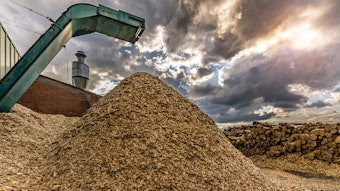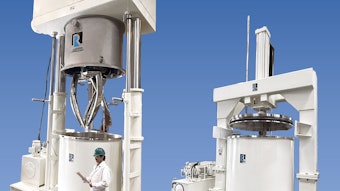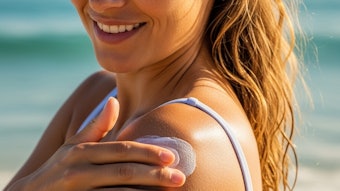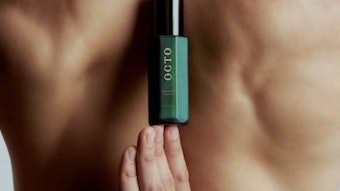Caviar lime is the common name for Microcitrus australasica, a large shrub to small tree belonging to the Rutaceae family, which includes all forms of citrus. The plant is endemic to Australia, where it grows naturally in the rainforest of northern New South Wales and southeast Queensland.1 The elongated cylindrical, edible fruit is found in various colors—green, red, orange, yellow, purple or black. The pulp is very different from other citrus fruits in that it consists of a myriad of tiny translucent pearls (see Figure 1). Its resemblance to caviar is striking, hence the name of the fruit.
This article is only available to registered users.
Log In to View the Full Article
Caviar lime is the common name for Microcitrus australasica, a large shrub to small tree belonging to the Rutaceae family, which includes all forms of citrus. The plant is endemic to Australia, where it grows naturally in the rainforest of northern New South Wales and southeast Queensland.1 The elongated cylindrical, edible fruit is found in various colors—green, red, orange, yellow, purple or black. The pulp is very different from other citrus fruits in that it consists of a myriad of tiny translucent pearls (see Figure 1). Its resemblance to caviar is striking, hence the name of the fruit.
Like the outer peel, the inner pearls appear in different colors. They are often served as a garnish on oysters, and marmalade, pickles, drinks and spice are also made from the fruit.2 As with any citrus fruit, caviar lime is rich in organic acids, essentially citric acid;3 its citric acid content has been reported as ~ 50 mg/g fresh weight (FW).2 By comparison, kiwi’s citric acid content is ~ 10 mg/g FW, and common lemon’s is ~ 5 mg/g FW.2
Citric acid is an alpha-hydroxy acid (AHA); other examples include glycolic acid, lactic acid, malic acid and tartaric acid. The cosmetic industry commonly uses this class of compounds to achieve benefits for skin conditions such as photoaging, acne, rosacea, ichthyosis, psoriasis and pigment disorders.4 Low concentrations of AHAs are often included in anti-aging cosmetic formulations for their desquamation-inducing properties, which have been proven useful for reducing the appearance of wrinkles and normalizing uneven skin pigmentation.5, 6
Until recently, the mechanism underlying the peeling activity of AHAs remained incompletely characterized. However, a recent study from the University of California Davis and Peking University has provided new insights.7 According to the model built by these investigators, AHAs enter freely into keratinocytes where they generate free protons that acidify the cells. In reaction, the Transient Receptor Potential Vanilloid 3 (TRPV3) is activated.
TRPV3s, which are preferentially expressed in the cell membrane of epidermal keratinocytes, are calcium channels that respond to warm temperatures, with a maximum activity at pH ± 5.5.7 Their activation opens the gates to a massive influx of Ca2+ ions inside cells (see Figure 2).8 The combination of intracellular Ca2+ overload and extracellular depletion then weakens cell attachment and stimulates the proliferation and differentiation of keratinocytes. At the physiological level, TRPV3 genes are involved in skin desquamation, barrier recovery, hair growth and wound healing.9
The aim of the study present herein was twofold: to assess the effectiveness of an extract from caviar lime to induce the skin desquamation process in human volunteers, and to identify the molecular mechanisms underlying this effect.
Experimental Design
Ingredients: An extract was obtained from the fruit of M. australasica through a proprietary aqueous extraction process. This extract was prepareda and employed in the tests described next to determine its potential skin benefits.
TRPV3 expression in keratinocytes: To determine TRPV3 expression, keratinocytes were isolated from normal human skin and seeded in micro-plates, where they were maintained in monolayer culture. Cell growth was performed at 37°C in an atmosphere of 95% air and 5% CO2. The culture medium consisted of Dulbecco’s Modified Eagle’s medium (DMEM) supplemented with 10% fetal calf serum, 1% antibiotics (penicillin/streptomycin) and 1% L-glutamine. When cells reached confluence, the culture medium was replaced with serum-free DMEM. Insulin (100 nM), used as positive control, or M. australasica extract (0.1% and 0.2%) was then added, and incubation was prolonged for 24 hr. After the incubation period, supernatants were collected and analyzed for the expression of TRPV3 using a specific enzyme-linked immunosorbent assay (ELISA). For comparison purposes, data was normalized according to total protein concentration, as measured by the Bradford assay for each sample.
Involucrin expression in keratinocytes: Involucrin is an essential protein component of the cornified envelope. First secreted in the cytoplasm of keratinocytes as they begin differentiating into corneocytes, involucrin becomes cross-linked to other structural proteins by transglutaminases to form a scaffold on which the cornified envelope assembly can proceed.10 As a marker of keratinocyte differentiation, the expression level of involucrin was therefore measured. To do so, HaCat keratinocytes were seeded and cultured in chamber slidesb, in a mediumc supplemented with human keratinocyte growth supplement (HKGS) and 1% penicillin/streptomycin. Cell growth was carried out at 37°C in an atmosphere of 95% air and 5% CO2 for 24 hr. Calcium chloride (1.5 mM), used as positive control, or M. australasica extract (0.4%) was then added to the culture medium for an additional 96-hr period. After the incubation period, the presence of involucrin in intact cells was detected using a specific monoclonal antibody and revealed with fluorescein isothiocyanate (FITC) secondary antibody. The green fluorescent signal, with an excitation/emission = 488 nm/520 nm, was analyzed and quantified using optical microscopy and dedicated softwared.
Clinical evaluation of exfoliation: To evaluate the clinical efficacy of the extract as a skin exfoliator, 20 healthy volunteers, of a mean age of 47 and having normal to dry skin, were enrolled in a double-blind, placebo-controlled study, with each individual serving as their own control. The study was performed in accordance with the Declaration of Helsinki (1964), and subsequent revisions were made under the supervision of a dermatologist. In a blind manner, volunteers were instructed to apply a gel (see Formula 1) having a pH of 5.7 and containing 2% M. australasica extract to one leg, and a placebo of the vehicle only to the other. Note that Picea excelsa extracte, a natural antioxidant, also was added to both the test and placebo formulas. Left and right leg assignments of the products were randomized. Applications were made once to each leg.
Skin stripping was performed symmetrically on each leg before (T0) and 30 min after (T30) the application of the products with a special adhesive foilf capable of collecting corneocytes. Images of each sample were then captured using a UVA-light video camera with high resolutiong, which allows for the study of irregular surfaces such as skin. When both tools are combined, a desquamation index can be directly calculated by the camera software—based on the number, size and thickness of the corneocytes present on the foil. The measured parameter therefore correlates well with the extension of the skin desquamation process.11
Calculating the desquamation index: The following equation was applied by the camera software to evaluate the desquamation index (DI):
DI = [2A + T1 x (1-1) + T2 x (2-1) + . . .Tn x (n-1)]/(n+1)
where A = total area covered by corneocytes in %; n = thickness of the corneocyte layer; and Tn = sum of the percentages of the single thickness layers.
Results
TRPV3 expression: M. australasica extract had a striking effect on TRPV3 expression in normal human keratinocytes (see Figure 3). Its addition to the culture medium for 24 hr stimulated the cell expression of TRPV3 with increasing concentration, reaching +75% when a 0.2% concentration was used. By comparison, insulin (100 nM), serving as the positive control, had a more modest increase of 21%, compared with the baseline.
Involucrin expression: M. australasica extract also proved to be a good inducer of involucrin expression in keratinocytes. Incubation of immortalized human keratinocytes (HaCat cells) with 0.4% extract for 96 hr resulted in a 62% augmentation of involucrin expression, compared with the baseline, as revealed by the immunofluorescence staining of cells (see Figure 4). Calcium (1.5 mM), a known inducer of involucrin,12 stimulated the protein expression by 184%, validating the experiment.
Clinical effects: When tested in vivo on a panel of 20 volunteers, M. australasica extract proved to be a gentle and effective exfoliator. Results of the foil stripping showed the extract stimulated skin exfoliation 26% more than the placebo, on average (see Figure 5). All volunteers responded positively to the extract. It should be noted that only one application was required for a short period of time (30 min) to see significant benefits. No adverse effect was reported during the study.
Discussion
Australian caviar lime extract was shown to efficiently promote TRPV3 expression in keratinocytes. As described earlier, the proton-mediated activation of TRPV3 ion channels at the surface of keratinocytes has recently been proposed as the main cellular pathway accounting for the exfoliation effect of AHAs.7 The opening of TRPV3 channels creates a sudden rush of Ca2+ inside cells that, when sustained, generates an intracellular calcium overload that facilitates the rupture of cell-cell contact and results in the shedding of dead cells. Thus, it is proposed that caviar lime extract may promote skin exfoliation in two ways: indirectly, through increased TRPV3 expression on cells; and more directly, given its AHA content, through activation of TRPV3 channel (see Figure 2).
Calcium is also a key regulator of keratinocyte proliferation and differentiation.12 With a sustained increased in intracellular calcium, a number of differentiation markers are sequentially expressed, including involucrin, which possesses calcium-responsive elements in its DNA sequence.13 In the present work, caviar lime extract also proved to be a good inducer of involucrin expression. Thus, the extract appears to favor keratinocyte differentiation into corneocytes. This is a good complement to its action on TRPV3, which is linked to shedding of old cells. Keratinocytes that remain longer in the skin tend to become more keratinized and therefore more rigid and fragile, as seen in aging skin.14 Thus, stimulating differentiation and shedding may improve the global keratinization process.
The in vitro results reported here support and explain the clinical benefits observed. All volunteers achieved improvement in the desquamation index of the leg that was treated with the caviar lime extract. The effect occurred rapidly, necessitating only one application, and proved to be gentle and safe. Remarkably, the caviar lime extract also was effective when formulated at a pH of 5.7, which is within the normal skin pH range.15 In contrast, most exfoliating ingredients require a stronger acidic pH of 3.5–4.5 to be effective. Since formulating at a lower pH increases the risk of irritation and adverse reactions, caviar lime extract may represent a much safer alternative for all skin types.
Conclusion
The presented study introduces caviar lime as a source of new exfoliating active ingredients. It identifies the molecular mechanisms supporting this activity and provides clinical evidence of effectiveness. Underlying mechanisms include stimulation of TRPV3 expression and activity, confirming the importance of this newly identified target for cosmetic applications. For the formulator, caviar lime extract represents a new and innovative alternative to improve the desquamation process and to stimulate the generation of new cells while formulating at physiological pH. Its action is rapid and gentle and does not require extensive acidification of the formulation. For the end user, potential benefits comprise improved skin appearance, feel and texture.
References
- TK Lim, Citrus australasica, in Edible Medicinal And Non-Medicinal Plants, vol 4, Fruits, Springer, Netherlands (2012) pp 625–628
- I Konczak, D Zabaras, M Dunstan and P Aguas, Antioxidant capacity and hydrophilic phytochemicals in commercially grown native Australian fruits, Food Chemistry 123(4) 1048–1054 (2010)
- KL Penniston, SY Nakada, RP Holmes and DG Assimos, Quantitative assessment of citric acid in lemon juice, lime juice and commercially-available fruit juice products, J Endourol 22(3) 567–70 (2008)
- A Kornhauser, SG Coelho and VJ Hearing, Applications of hydroxy acids: Classification, mechanisms, and photoactivity, Clin Cosmet Invest Dermatol 24(3) 135–42 (2010)
- C Rona, F Vailati and E Berardesca, The cosmetic treatment of wrinkles, J Cosmet Dermatol 3(1) 26–34 (2004)
- MH Gold and C Gallagher, An evaluation of the benefits of a topical treatment in the improvement of photodamaged hands with age spots, freckles and/or discolorations, J Drugs Dermatol 12(12) 1468–72 (2013)
- X Cao, F Yang, J Zheng and K Wang, Intracellular proton-mediated activation of TRPV3 channels accounts for the exfoliation effect of a-hydroxyl acids on keratinocytes, J Biol Chem 287(31) 25905–16 (2012)
- AM Peier et al, A heat sensitive TRP channel expressed in keratinocytes, Science 296(5575) 2046–9 (2002)
- B Nilius and T Bíró, TRPV3: A ‘more than skinny’ channel, Exp Dermatol 22(7) 447–52 (2013)
- E Candi, R Schmidt and G Melino, The cornified envelope: A model of cell death in the skin, Nat Rev Mol Cell Biol 6(4) 328–40 (2005)
- M Breternitz, M Flach, J Prässler, P Elsner and JW Fluhr, Acute barrier disruption by adhesive tapes is influenced by pressure, time and anatomical location: Integrity and cohesion assessed by sequential tape stripping. A randomized, controlled study, Br J Dermatol 156(2) 231–40 (2007)
- DD Bikle, D Ng, CL Tu, Y Oda and Z Xie, Calcium- and vitamin D-regulated keratinocyte differentiation, Mol Cell Endocrinol 177(1–2) 161–71 (2001)
- NQ Tran and DL Crowe, Regulation of the human involucrin gene promoter by co activator proteins, Biochem J 381(part 1) 267–73 (2004)
- H Tagami, Functional characteristics of the stratum corneum in photoaged skin in comparison with those found in intrinsic aging, Arch Dermatol Res 300 Suppl 1:S1–6 (2008)
- SM Ali and G Yosipovitch, Skin pH: From basic science to basic skin care, Acta Derm Venereol 93(3) 261–7 (2013)










